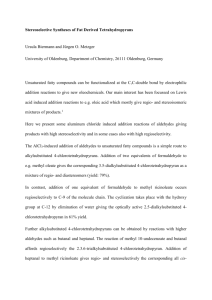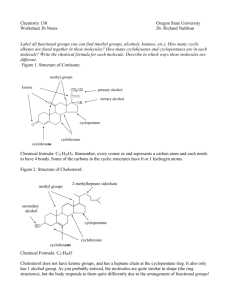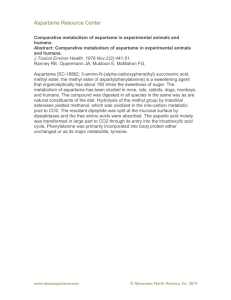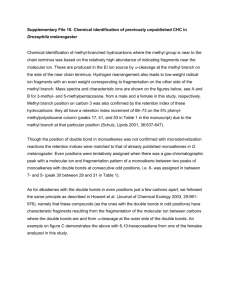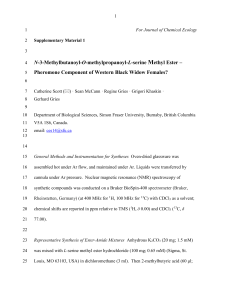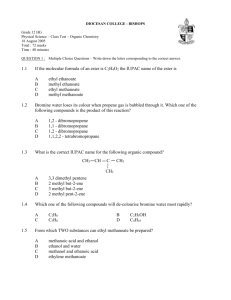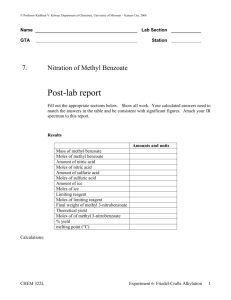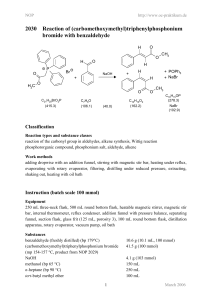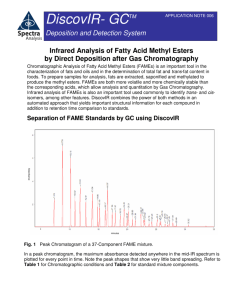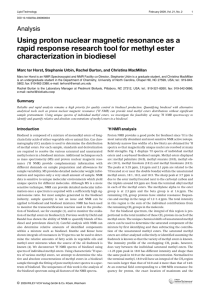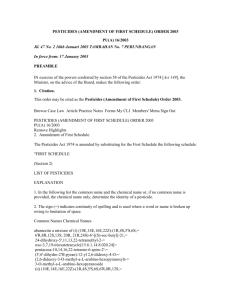Soybean Methyl Esters
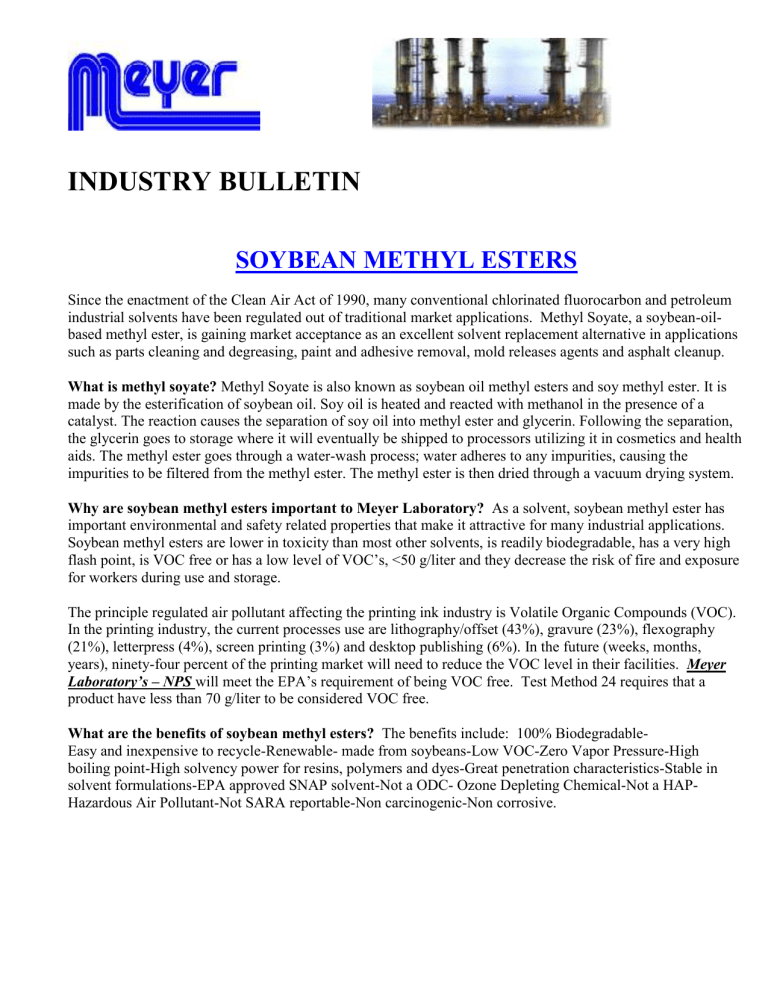
INDUSTRY BULLETIN
SOYBEAN METHYL ESTERS
Since the enactment of the Clean Air Act of 1990, many conventional chlorinated fluorocarbon and petroleum industrial solvents have been regulated out of traditional market applications. Methyl Soyate, a soybean-oilbased methyl ester, is gaining market acceptance as an excellent solvent replacement alternative in applications such as parts cleaning and degreasing, paint and adhesive removal, mold releases agents and asphalt cleanup.
What is methyl soyate?
Methyl Soyate is also known as soybean oil methyl esters and soy methyl ester. It is made by the esterification of soybean oil. Soy oil is heated and reacted with methanol in the presence of a catalyst. The reaction causes the separation of soy oil into methyl ester and glycerin. Following the separation, the glycerin goes to storage where it will eventually be shipped to processors utilizing it in cosmetics and health aids. The methyl ester goes through a water-wash process; water adheres to any impurities, causing the impurities to be filtered from the methyl ester. The methyl ester is then dried through a vacuum drying system.
Why are soybean methyl esters important to Meyer Laboratory?
As a solvent, soybean methyl ester has important environmental and safety related properties that make it attractive for many industrial applications.
Soybean methyl esters are lower in toxicity than most other solvents, is readily biodegradable, has a very high flash point, is VOC free or has a low level of VOC’s, <50 g/liter and they decrease the risk of fire and exposure for workers during use and storage.
The principle regulated air pollutant affecting the printing ink industry is Volatile Organic Compounds (VOC).
In the printing industry, the current processes use are lithography/offset (43%), gravure (23%), flexography
(21%), letterpress (4%), screen printing (3%) and desktop publishing (6%). In the future (weeks, months, years), ninety-four percent of the printing market will need to reduce the VOC level in their facilities. Meyer
Laboratory’s – NPS will meet the EPA’s requirement of being VOC free. Test Method 24 requires that a product have less than 70 g/liter to be considered VOC free.
What are the benefits of soybean methyl esters? The benefits include: 100% Biodegradable-
Easy and inexpensive to recycle-Renewable- made from soybeans-Low VOC-Zero Vapor Pressure-High boiling point-High solvency power for resins, polymers and dyes-Great penetration characteristics-Stable in solvent formulations-EPA approved SNAP solvent-Not a ODC- Ozone Depleting Chemical-Not a HAP-
Hazardous Air Pollutant-Not SARA reportable-Non carcinogenic-Non corrosive.
Solvent Properties
Product Kb Value
Soybean Methyl Esters 58
Mineral Sprits 35
Tolune 105
Naphtha 35
% VOCs Flash Point
< 50 g/liter >360
100 107
100
100
41
58
d-Limonene 56 95 121
Trichloroethylene 129 100 None
Methylene Chloride 136 100 None
Elevated temperatures and agitation can enhance soybean methyl ester’s cleaning, rinsability and accelerate evaporation, which is characteristically slow.
Kb Value (Kauri-butanol) is the relative measure of solvency. The higher the KB Value the quicker the product will degrease and the faster the evaporation rate.
HAZARDOUS CHEMICAL
Methylene Chloride
Trichloroethylene
1,1,1, Trichloroethane
Benzene
Toluene
Xylene
Perchloroethylene
NPS-Non Petroleum Solvent
Mineral Spirits
Naphtha
Kerosene
Stoddard Solvent
MEK
Acetone
NOTES: 1.
Carcinogenic 2.
Flammable 3.
Toxic
4.
Non-Biodegradable
5.
Ozone Depleting
6. Biodegradable, Not a ODC, Not a HAP, Non Carcinogenic
Kb VALUE (solvency)
136
129
124
107
105
98
92
58
37
35
34
33
N/A
N/A
NOTES
1,3,4
3,4
3,4,5
1,2,3,4
2,3,4
2,3,4
3,4
6
4
2,3,4
4
3,4
2,3,4
2,3,4
